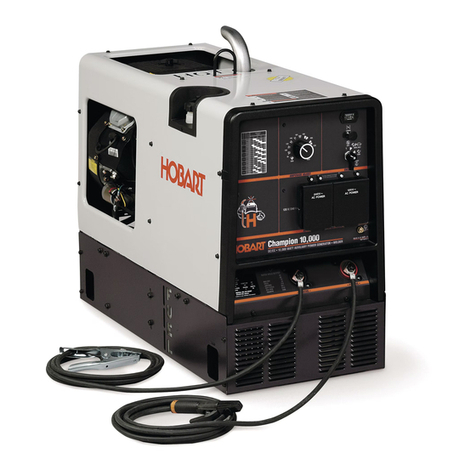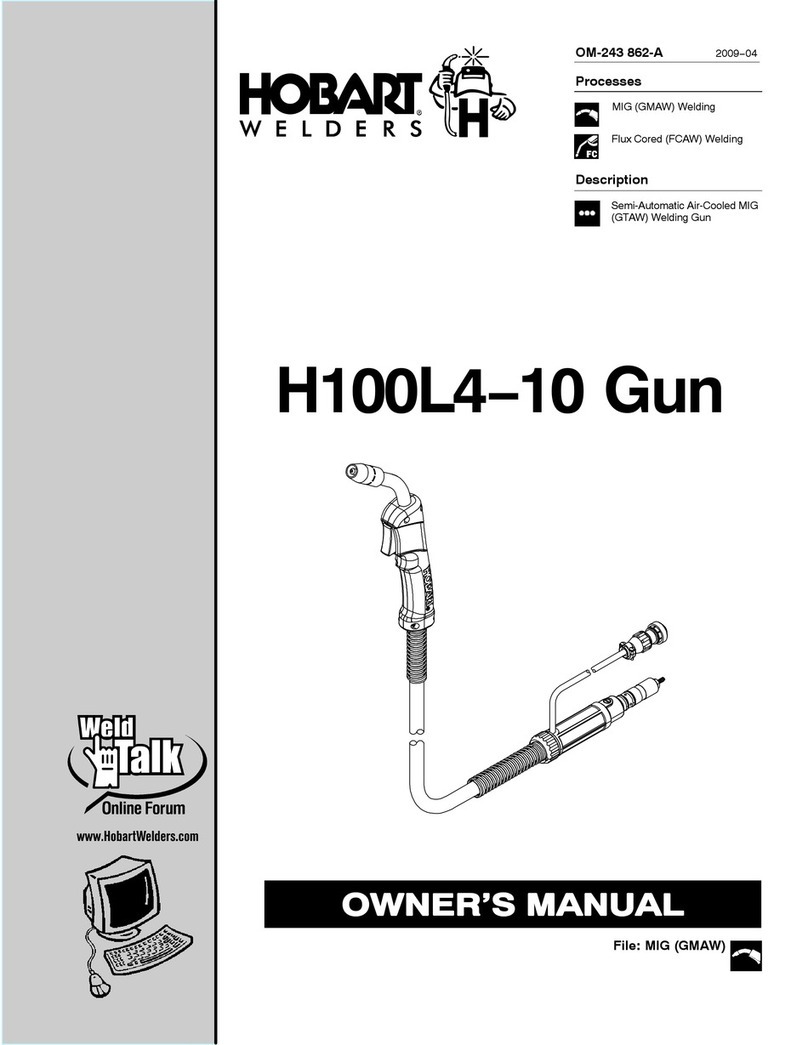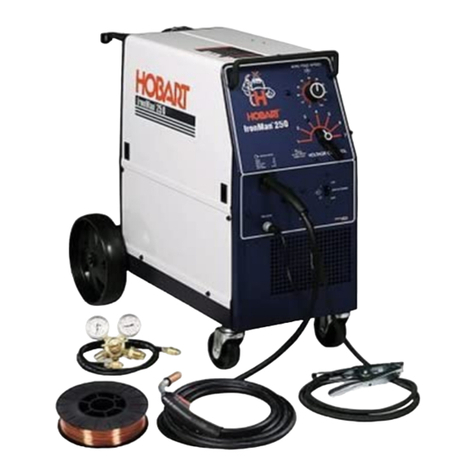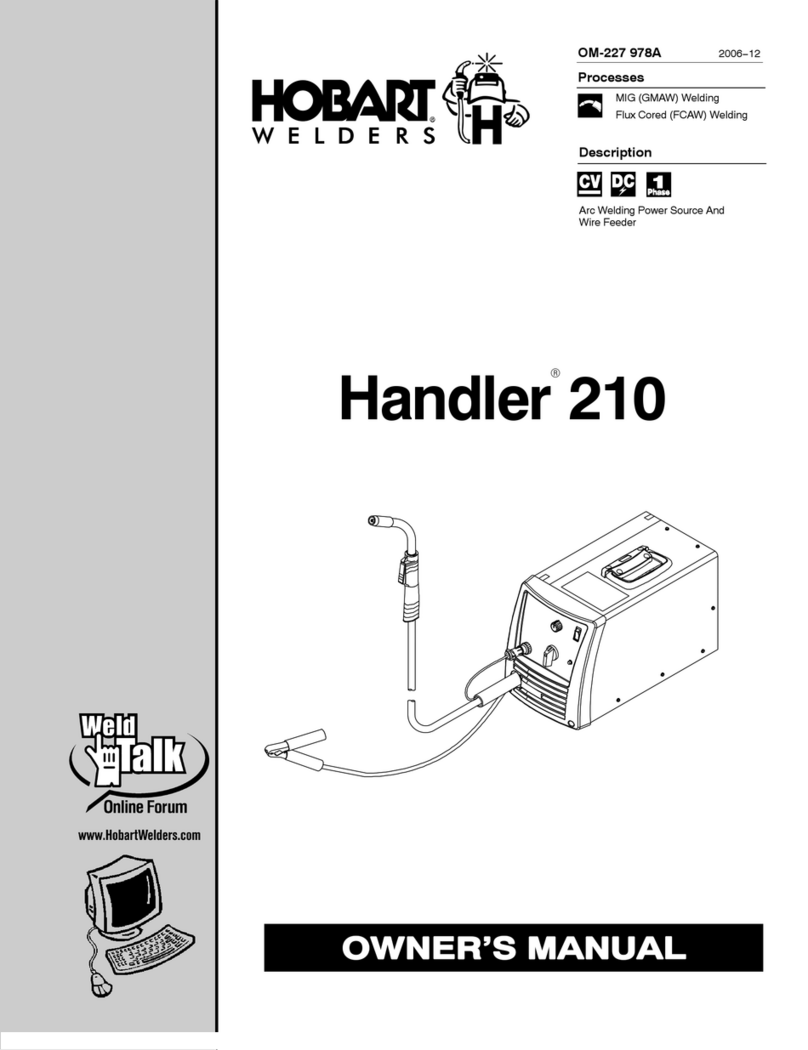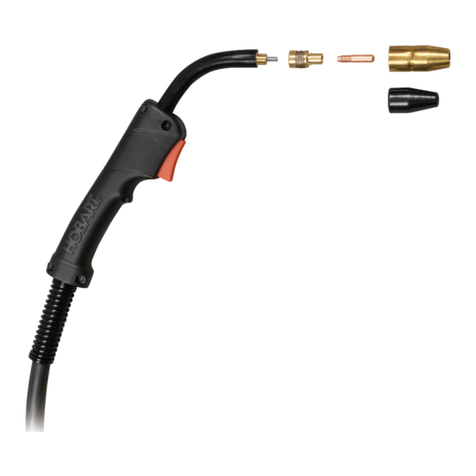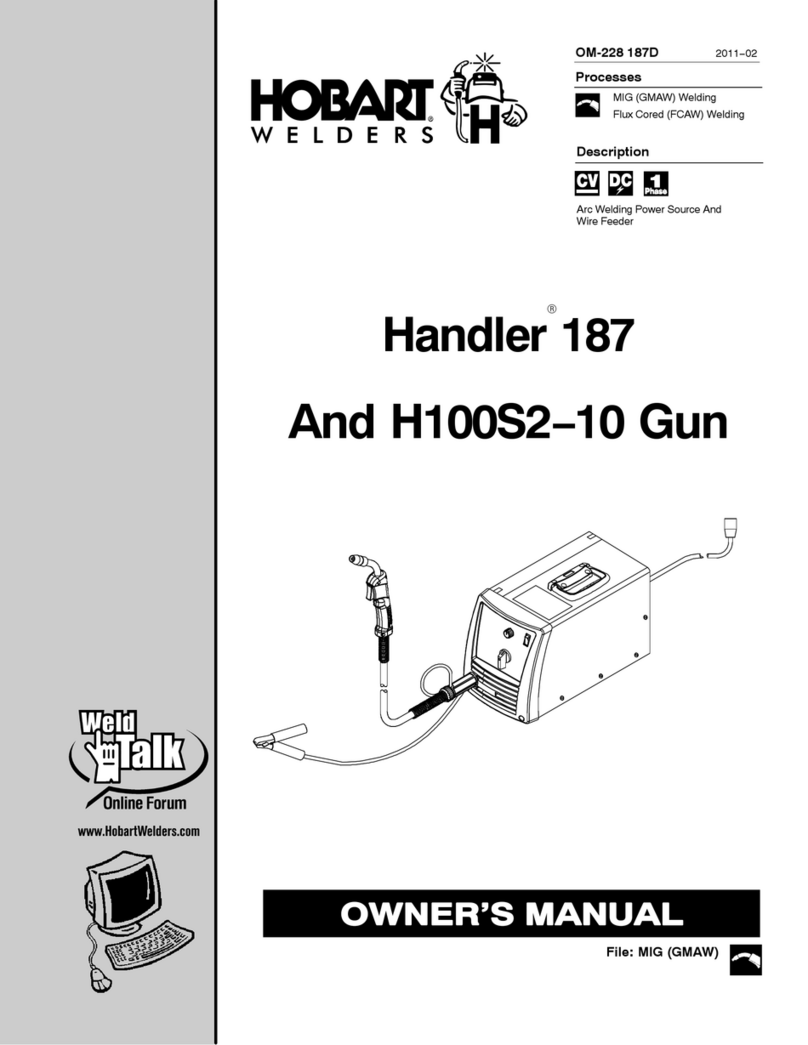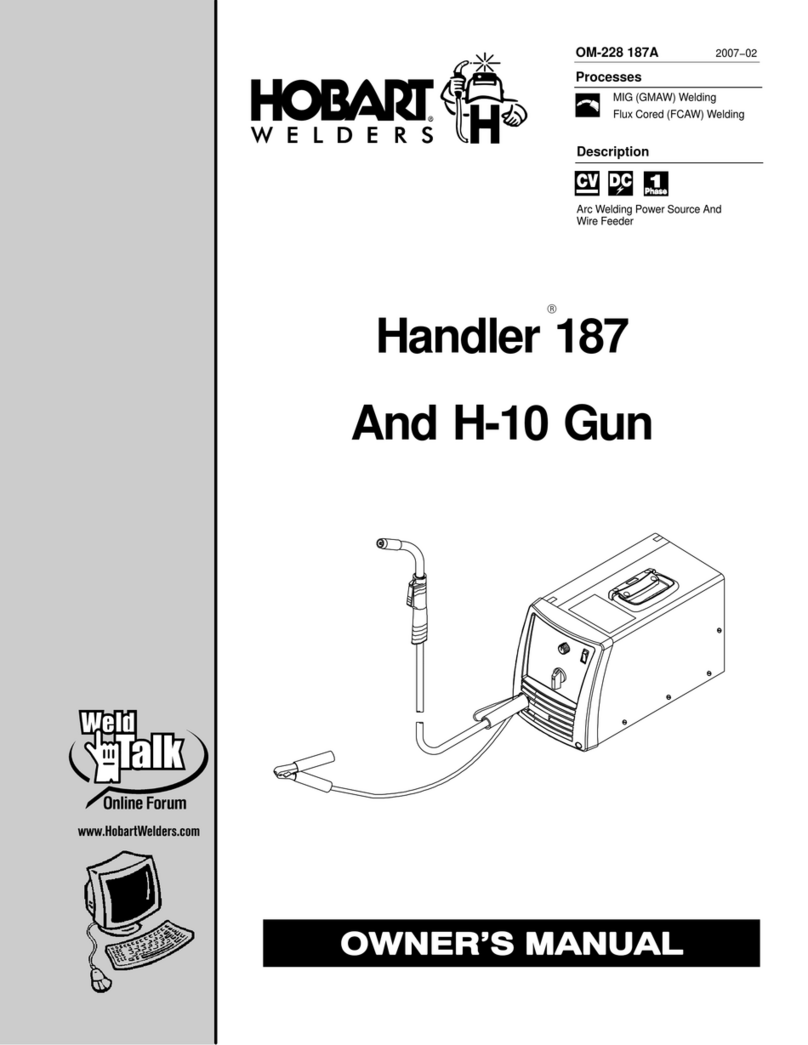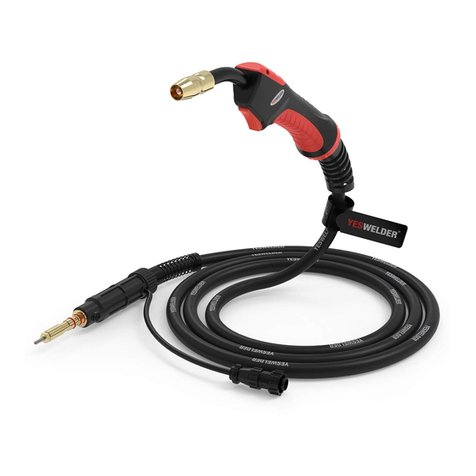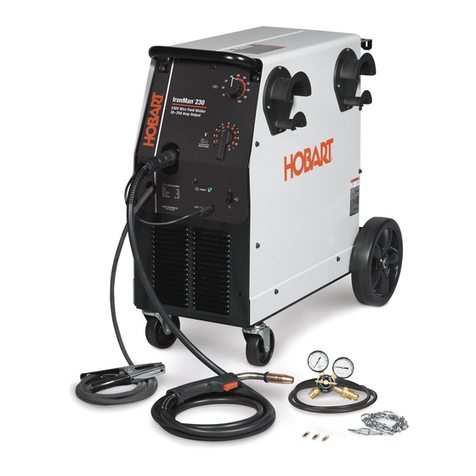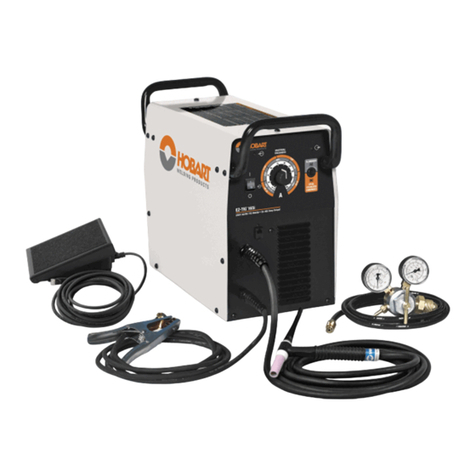
OM-189 120 Page 3
=" <->-.!
-
Do not install or place unit on, over, or near
combustible surfaces.
-
Do not install unit near flammables.
-
Do not overload building wiring -- be sure power supply system
is properly sized, rated, and protected to handle this unit.
"" - -6 :69!
-
Use lifting eye to lift unit only, OT running
gear, gas cylinders, or any other accessories.
-
Use equipment of adequate capacity to lift and
support unit.
-
If using lift forks to move unit,be sure forks are
longenoughtoextendbeyondoppositesideof
unit.
2 - -6 2&
-
Allow cooling period; follow rated duty cycle.
-
Reduce current or reduce duty cycle before
starting to weld again.
-
Do not block or filter airflow to unit.
-
Put on grounded wrist strap BEFORE
handling boards or parts.
-
Use proper static-proof bags and boxes to
store, move, or ship PC boards.
2 - -6 :69!
-
Keep away from moving parts.
-
Keep away from pinch points such as drive
rolls.
)" ) - -6 :69!
-
Do not press gun trigger until instructed to do
so.
-
Do not point gun toward any part of the body,
other people, or any metal when threading
welding wire.
2 - -6 :69!
-
Keep away from moving parts such as fans.
-
Keep all doors, panels, covers, and guards
closed and securely in place.
+) 5$',$7,21 FDQ FDXVH LQWHUIHUHQFH
-
High-frequency (H.F.) can interfere with radio
navigation, safety services, computers, and
communications equipment.
-
Have only qualified persons familiar with
electronic equipment perform this installation.
-
The user is responsible for having a qualified electrician
promptly correct any interference problem resulting from the
installation.
-
If notified by the FCC about interference, stop using the
equipment at once.
-
Have the installation regularly checked and maintained.
-
Keep high-frequency source doors and panels tightly shut,
keep spark gaps at correct setting, and use grounding and
shielding to minimize the possibility of interference.
$5& :(/',1* FDQ FDXVH LQWHUIHUHQFH
-
Electromagnetic energy can interfere with
sensitive electronic equipment such as
computers and computer-driven equipment
such as robots.
-
Be sure all equipment in the welding area is
electromagnetically compatible.
-
To reduce possible interference, keep weld cables as short as
possible, close together, and down low, such as on the floor.
-
Locate welding operation 100 meters from any sensitive elec-
tronic equipment.
-
Be sure this welding machine is installed and grounded
according to this manual.
-
If interference still occurs, the user must take extra measures
such as moving the welding machine, using shielded cables,
using line filters, or shielding the work area.
! " #
6DIHW\ LQ :HOGLQJ DQG &XWWLQJ
, A SI Standard Z49.1, from American
Welding Society, 550 .W. LeJeune Rd, Miami FL 33126
6DIHW\ DQG +HDOWK 6WDQGDUGV
, OSHA 29 CFR 1910, from Superinten-
dent of Documents, U.S. Government Printing Office, Washington,
D.C. 20402.
5HFRPPHQGHG 6DIH 3UDFWLFHV IRU WKH 3UHSDUDWLRQ IRU :HOGLQJ DQG
&XWWLQJ RI &RQWDLQHUV 7KDW +D H +HOG +D]DUGRXV 6XEVWDQFHV
,
American Welding Society Standard AWS F4.1, from American
Welding Society, 550 .W. LeJeune Rd, Miami, FL 33126
1DWLRQDO (OHFWULFDO &RGH
, FPA Standard 70, from ational Fire
Protection Association, Batterymarch Park, Quincy, MA 02269.
6DIH +DQGOLQJ RI &RPSUHVVHG *DVHV LQ &\OLQGHUV
, CGA Pamphlet
P-1, from Compressed Gas Association, 1235 Jefferson Davis
Highway, Suite 501, Arlington, VA 22202.
&RGH IRU 6DIHW\ LQ :HOGLQJ DQG &XWWLQJ
, CSA Standard W117.2, from
Canadian Standards Association, Standards Sales, 178 Rexdale
Boulevard, Rexdale, Ontario, Canada M9W 1R3.
S
DIH 3UDFWLFHV )RU 2FFXSDWLRQ $QG (GXFDWLRQDO (\H $QG )DFH
3URWHFWLRQ
, A SI Standard Z87.1, from American ational Standards
Institute, 1430 Broadway, ew York, Y 10018.
&XWWLQJ $QG :HOGLQJ 3URFHVVHV
, FPA Standard 51B, from ational
Fire Protection Association, Batterymarch Park, Quincy, MA 02269.
